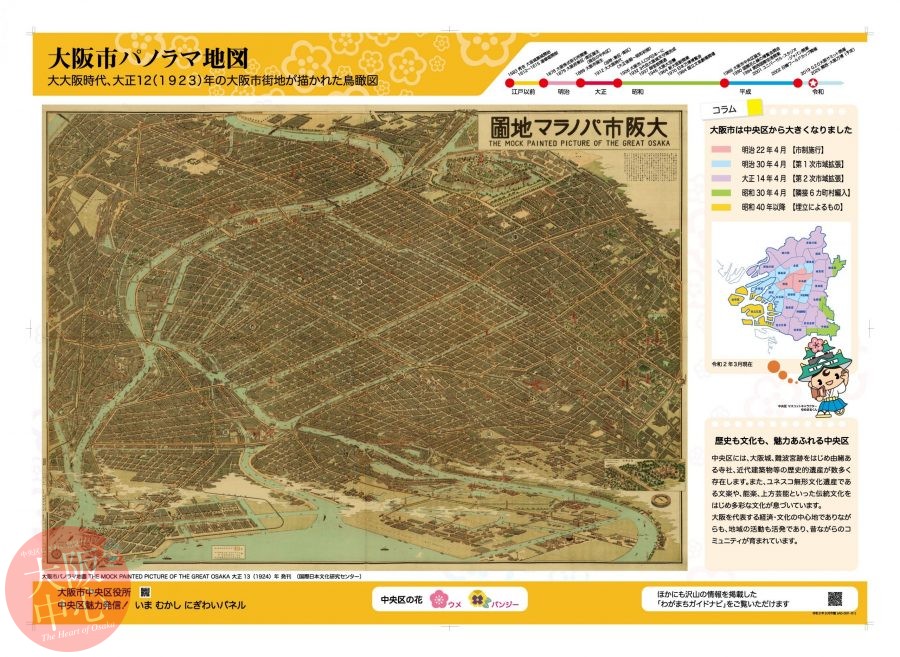
A0D01 – Panoramic Map of Osaka City A bird’s-eye view of the city of Osaka in 1923, during the Dai-Osaka (Great Osaka) era.
The Rich History and Culture of Chuo Ward Chuo Ward is home to a number of his …
中央区の歴史をパネルにしてみました。江戸時代絵図から現代の写真まで、歴史ある中央区のを絵と写真で解説。
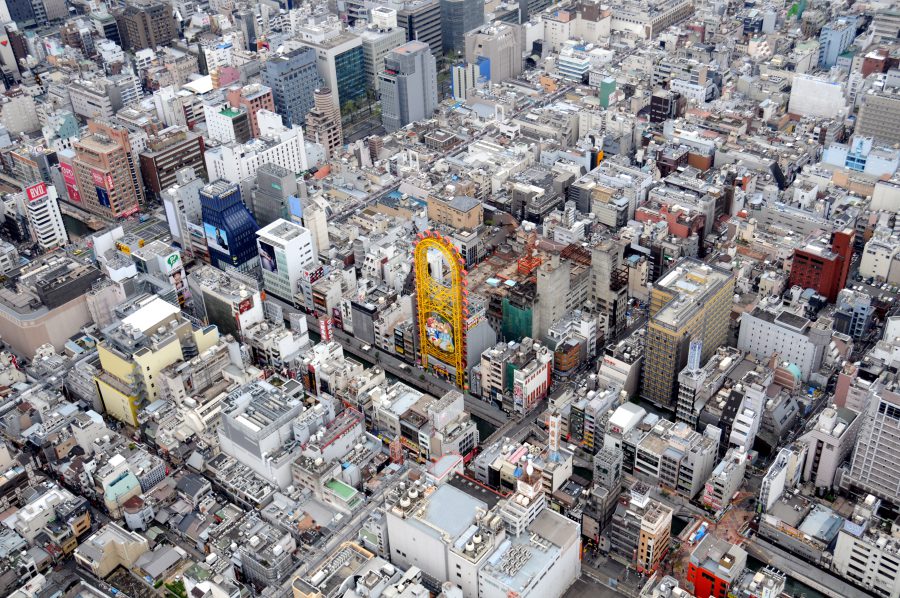
The newest design of this bridge features a circular shaped plaza that symbolizes the area’s theatrical history, and the slopes that wrap around it lead down to the waterfront, allowing you to enjoy the riverside scenery at a leisurely pace as you descend.
The old Glico sign can be seen on the right-hand side.
It is said that the name of this bridge comes from Osaka Tazaemon, an entertainer who opened a kabuki theater on the southeast corner of the bridge. In recent years, when the bridge was renovated, its origins and the presence of numerous theaters in the area were taken into consideration for its wood-based design.
The bridge that stands today was built in 1958, and it features what was the latest technology at the time.
To the south of this bridge was an area packed with theaters, their yagura towers lined up in a row, to its north the Soemon-cho teahouse district, and a red-light district on the road leading to the bridge. It is said that the coquettish name of the bridge was given because of the vibrant atmosphere of the area around it.
During the Edo period it was called Nakabashi Bridge or Shin-Nakabashi Bridge. It also appeared in a passage of the Joruri “Shinju Kasane Izutsu” by Chikamatsu Monzaemon.
It is at this bridge where Sakai-suji (the Kishu Kaido highway) passes through Dotombori. During the Edo period (1603-1867) it was a bridge directly managed by Tokugawa Shogunate. The neighborhood on the road leading to the bridge was known as Nagamachi, which was lined with inns and taverns. There was also a pier at the base of the bridge, making it a vibrant hub for both land and water transport.
The tall building on the right is a fire watchtower.
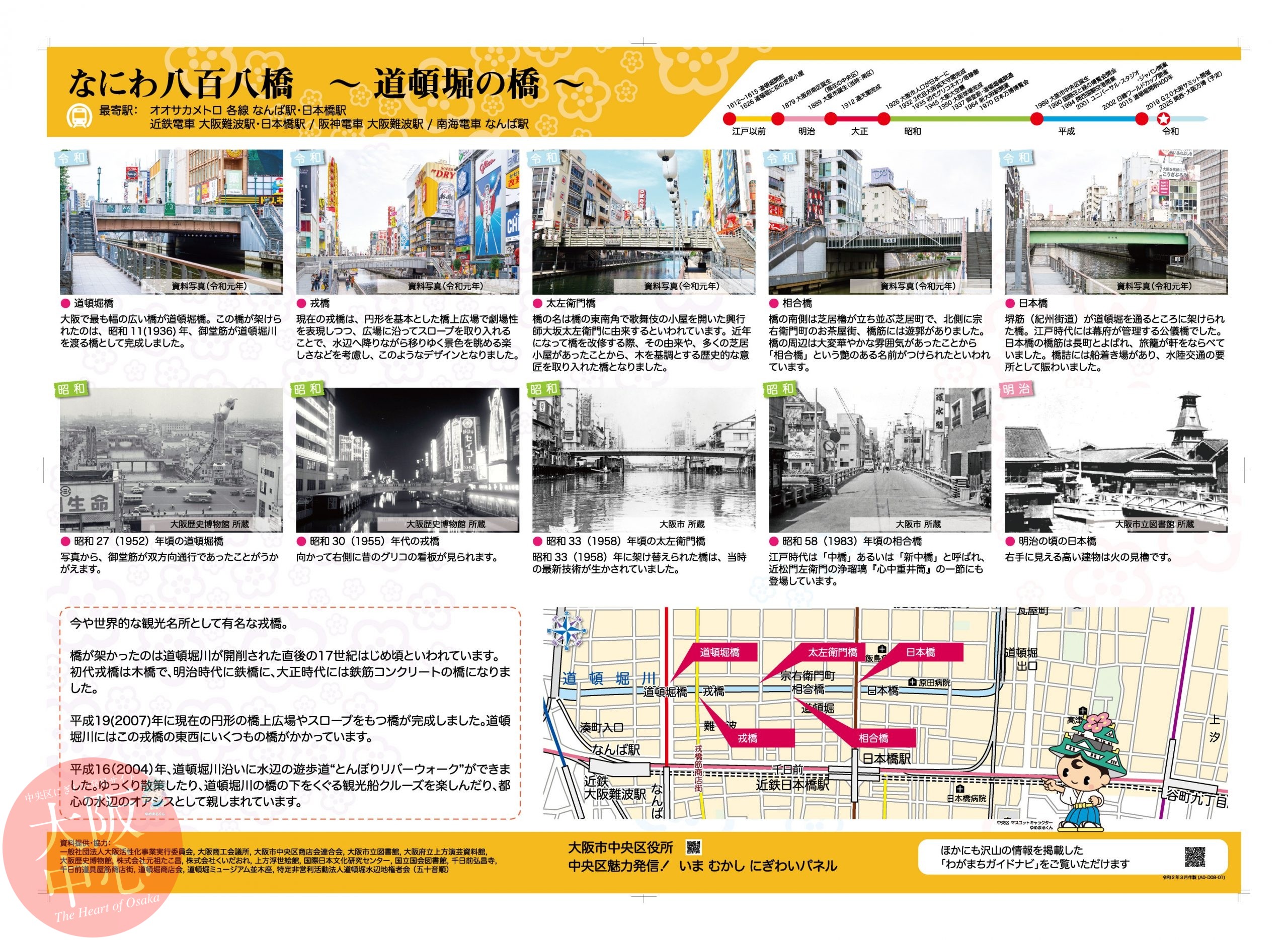

The Rich History and Culture of Chuo Ward Chuo Ward is home to a number of his …

Dotombori: The Landmark of a Bustling City Doton, who was involved in the cons …
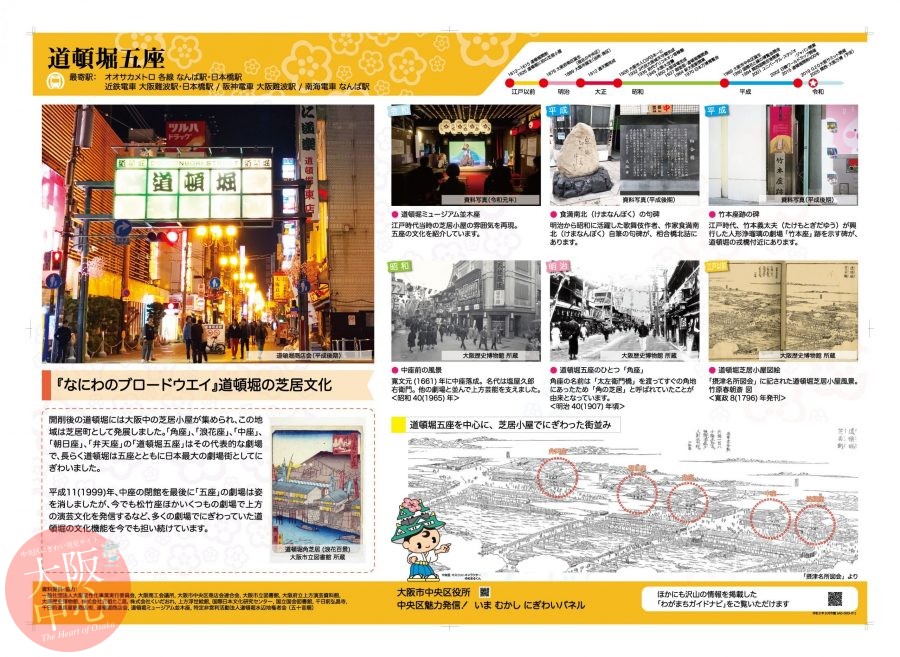
The Broadway of Naniwa: Dotombori’s Theater Culture After the excavation of Do …
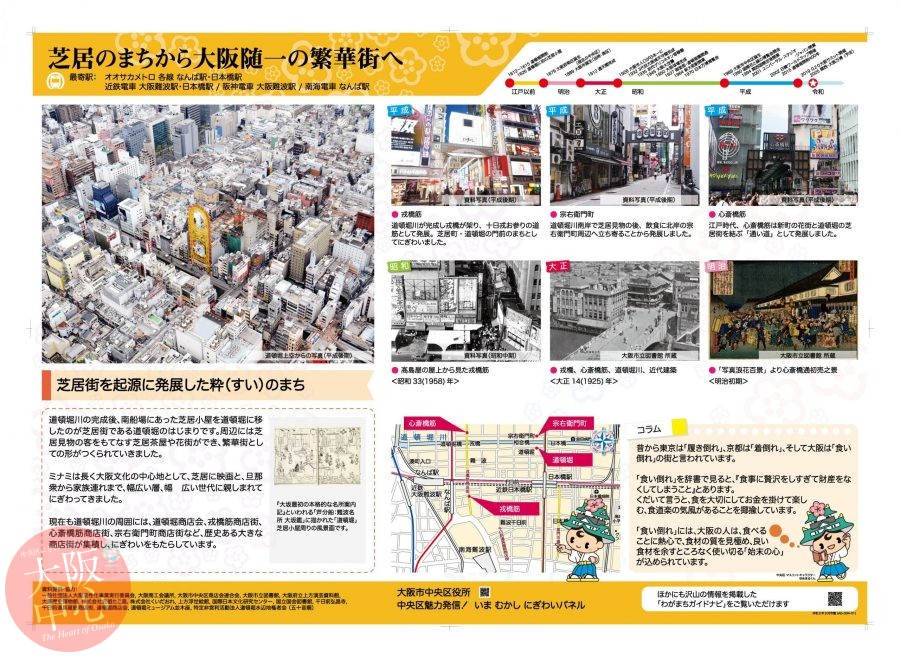
A stylish area with its roots in the theater district After the construction o …
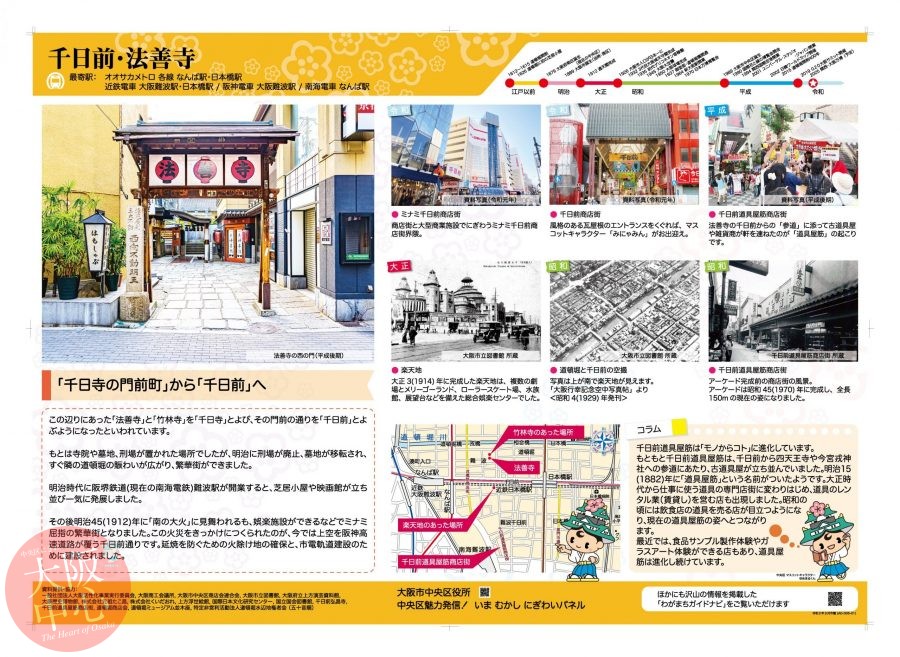
Evolving from the temple town of Sennichidera to Sennichimae It is said that H …
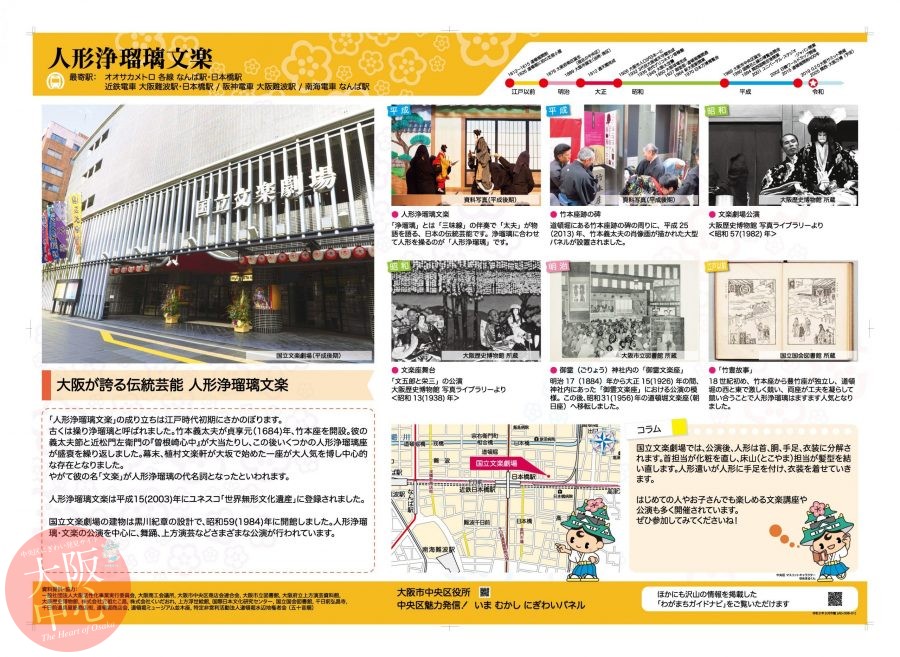
Ningyo Joruri Bunraku: A proud traditional performing art of Osaka The origins …
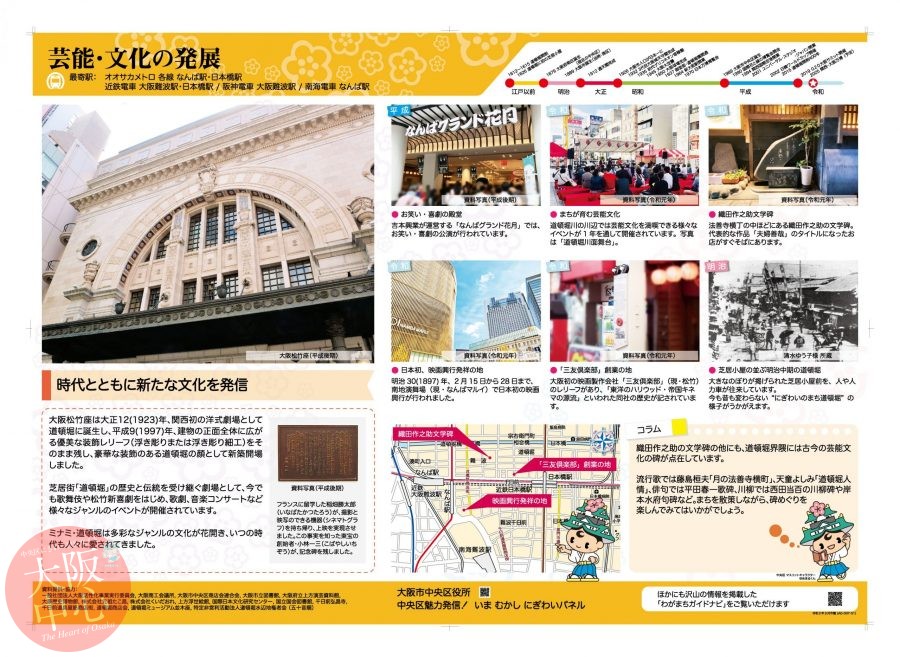
Disseminating new culture that reflects the times Osaka Shochikuza opened in D …

Ebisubashi Bridge has become a world-famous tourist attraction. It is said tha …
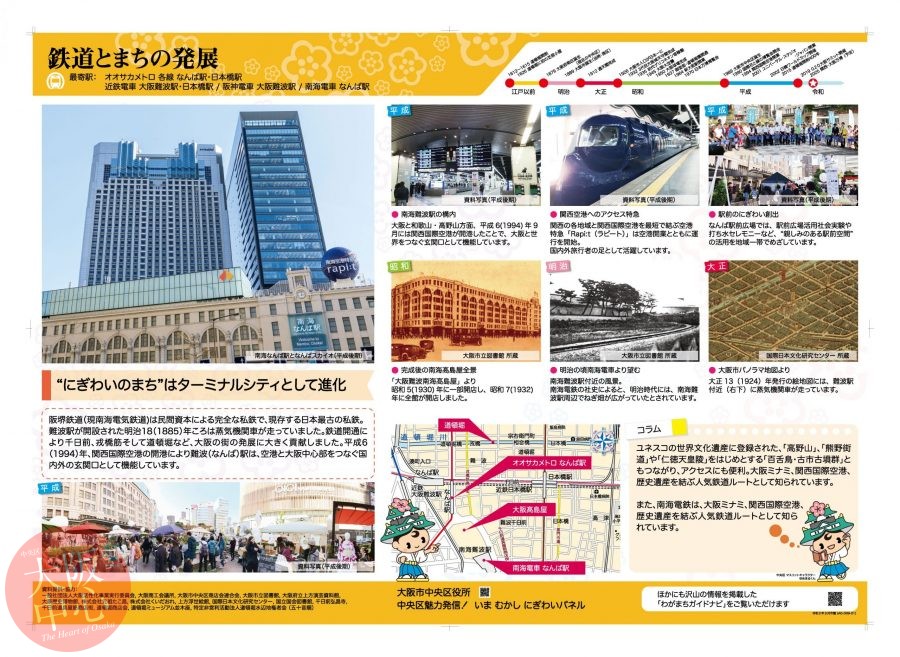
A bustling city evolving into a hub for travel Hankai Railway (now Nankai Elec …
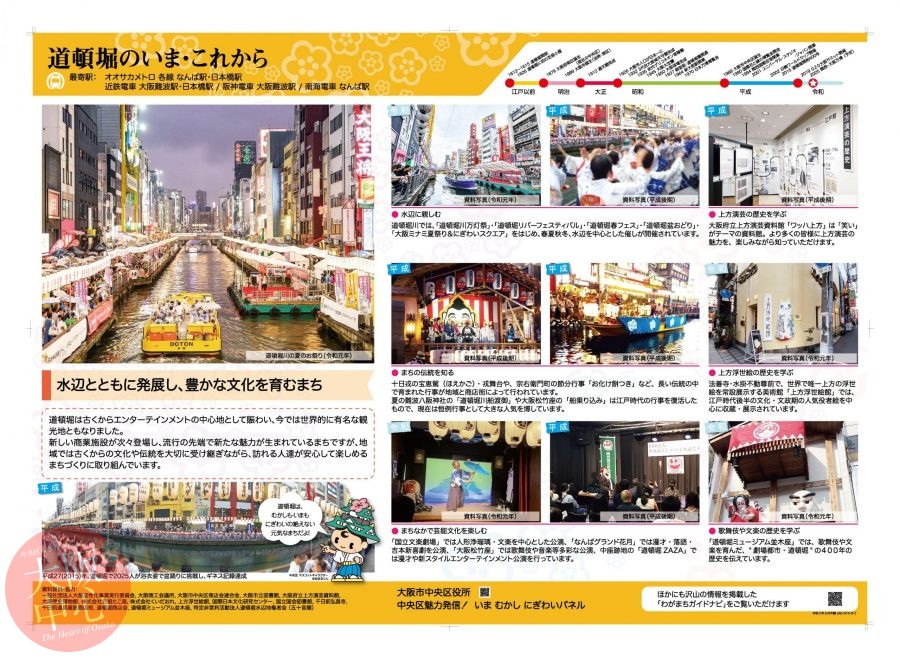
Developing the waterfront and nurturing a rich culture Dotombori has long been …